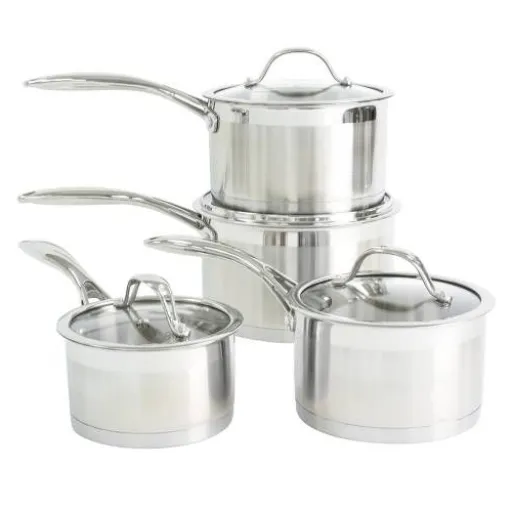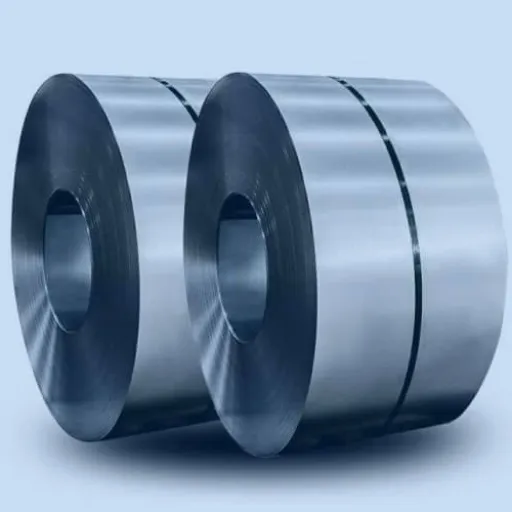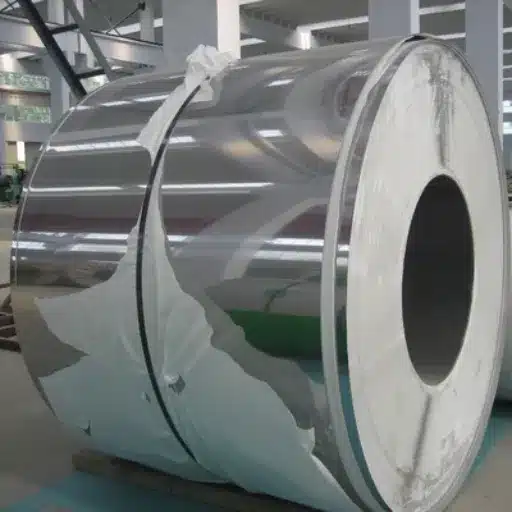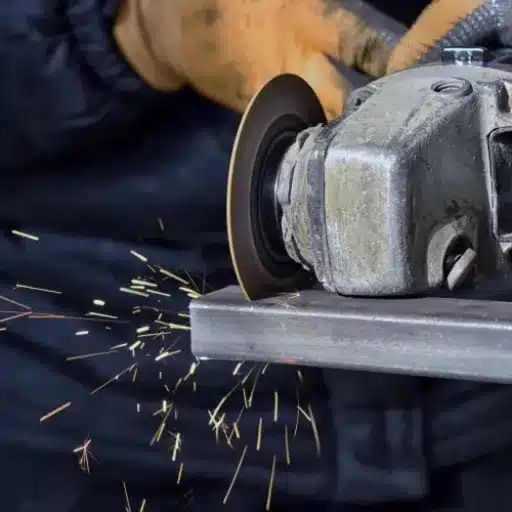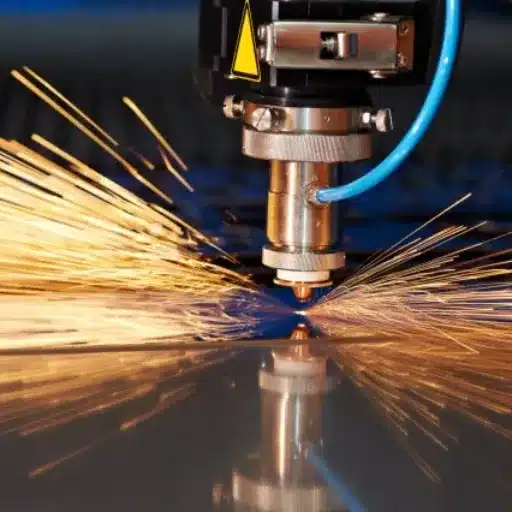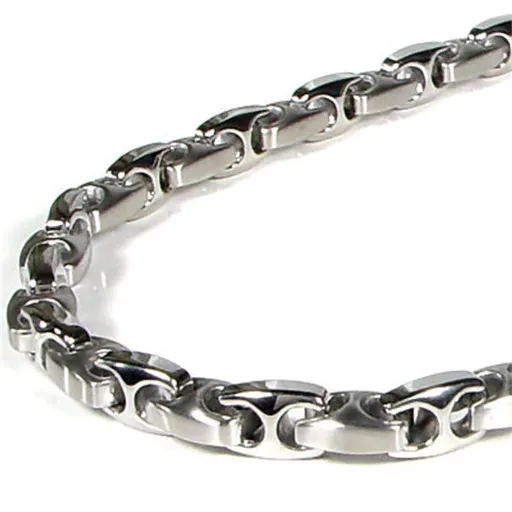The selection of the most suitable piece of jewelry presents a problem which is usually faced by many: sterling silver or stainless steel? Each of the two materials has its own characteristics as well as a distinct appeal and the choice is mostly influenced by your tastes, habits, and financial resources. The present article will clarify the main differences between sterling silver and stainless steel and so lead you to the right decision. We will be discussing and comparing every aspect concerning durability and maintenance, looking, and affordability to allow you to choose the one that suits your needs the best. If you are considering buying something for everyday use or for a specific occasion, the this comparison will not only be easier but also more secure. Therefore, continue reading to find out which material is suitable for you!
Introduction
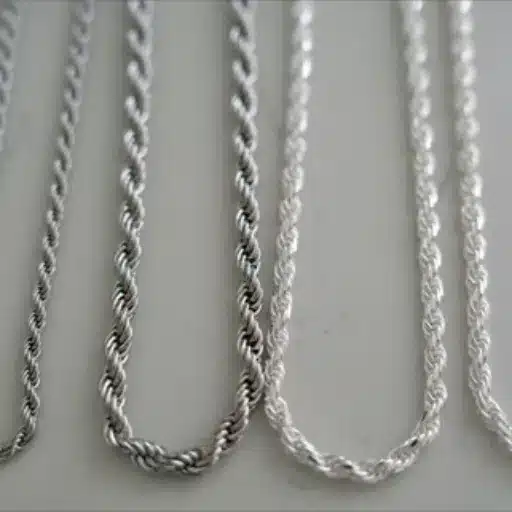
Overview of Sterling Silver and Stainless Steel
1
Sterling Silver
Sterling silver is a metal mix containing 92.5% pure silver and 7.5% other metals, mostly copper. This particular composition characterizes sterling silver with the well-known “925” mark. The metal’s great attractiveness and its classic beauty made it very common among the upper class for luxurious and pricey jewelry. Sadly, it has to be cleaned regularly because it tends to lose its brightness in the course of the years due to oxidation. Additionally, sterling silver can be shaped and formed into very delicate patterns since it is softer, but such pieces are not suitable for daily wear for the reason that they lack strength. Nevertheless, recent surveys indicate that sterling silver is still among the most favorable choices together with diamonds, pearls, and other stones for consumers seeking non-ruinous, stunning pieces with the biggest aesthetic shares going through its actors.
2
Stainless Steel
On the other hand, stainless steel is an iron-based alloy with the addition of chromium and carbon as the main components. The high content of chromium (which is usually at least 10.5%) makes it very effective in preventing rust, corrosion, and tarnish. Stainless steel is so tough that it is practically impossible for it to get worn out with daily use and still remain a practical choice for casual or functional jewelry. The combination of its strength and low cost has made it to become increasingly favored, particularly by younger consumers who look for maintenance-free and budget-friendly options. The latest report indicates that the demand for stainless steel jewelry has gone up by more than 20 percent in the last couple of years, and the trend is attributed to the combination of the contemporary/in-the-know aspect and the durability.
Importance of Material Choice in Jewelry
- 1
Durability: Materials such as stainless steel and titanium are considered as the toughest ones and most resistant to wear and tear, thus they are not only fit for daily use but also can last for a lifetime. Nevertheless, gold and sterling silver are quite prone to tarnishing and scratching over a long period especially in higher-purity forms. - 2
Aesthetic Appeal: Gold comes with an everlasting beauty, besides the yellow, white, and rose gold which are variations that add to its charm. On the contrary, sterling silver offers a sleek and sophisticated look that is good for both casual and formal occasions. By contrast, stainless steel is gaining its way through with its modern and industrial stylings which are less traditional but appealing. - 3
Skin Compatibility: Jewelry made from platinum or certain grades of stainless steel, which are hypoallergenic materials, will minimize the possibility of skin irritation or allergies, this is the case for people with sensitive skin so it is very essential in such cases. - 4
Long-term Value: Recent market analysis and trends indicate that gold is still a safe investment that retains its value over time. Sterling silver has a moderate resale value while stainless steel is affordable but is generally not treated as a long-term asset.
Material Composition

What is Sterling Silver?
Sterling silver is a precious metal that is widely used due to its combination of durability, versatility, and classic attractiveness. The alloy that constitutes sterling silver is made up of 92.5% pure silver and 7.5% of other metals, usually copper, which are there mainly to give the metal strength and to make it wear-resistant. With this making-up, sterling silver can be used in designing jewelry, utensils, and decorative pieces even though it is not very soft like pure silver.
As per the latest market analysis, sterling silver still enjoys the status of a favorite metal among consumers as it is considerably cheaper than gold or platinum and other precious metals. Moreover, it is accepted for its non-allergenic character, which means it is a good option for people with delicate skin. It has been estimated that the population of sterling silver will advance at a steady pace with the worldwide market worth hitting approximately $27 billion by the year 2028. The incredible popularity of silver in sustainable jewelry and the continuous growth in the use of the metal in different industrial and technological applications are the key factors for this trend.
What is Stainless Steel?
Stainless steel is an alloy that is very good in terms of various properties like being versatile, durable, and resistant to corrosion. The main components of stainless steel are iron, chromium, and nickel. In addition to these, smaller quantities of other elements like manganese and carbon might also be present. With more than 10.5% of the alloy being chromium, the metal gets its ability to make a protective oxide layer that protects against rust and at the same time makes the metal last longer even if it is placed in very harsh conditions. Stainless steel is known to be really strong, requires little maintenance, has a beautiful finish, and can be easily recycled, which are some of the reasons for its wide use in various industries.
At the moment, the stainless steel market is considerably large globally, with a demand for over 58 million metric tons of the metal annually being projected for the year 2023. The applications of the stainless steel in construction, automotive, medical equipment, home appliances, and food and beverage are the main reasons behind the increasing demand. For example, due to its excellent hygiene, long-lasting quality, and ability to withstand very high and very low temperatures, stainless steel is extensively used in kitchen utensils, surgical tools, and structural materials.
Durability

Durability of Sterling Silver
Sterling silver is an alloy of 92.5% silver and 7.5% of other metals (usually copper) that is given special treatment for its beauty and melability. However, its durability will depend on the composition. Silver is a soft metal that is easily worked and therefore not used in the making of strong items, but other metals do make it stronger, and by that, sterling silver becomes more durable and somewhat practical for everyday use in items like jewelry, cutlery, and even decorative objects.
Tarnishing is, however, the major cause of sterling silver getting less durable, but still, it remains a superior metal to pure silver. It can develop an ugly dark color when the environment is rich in moisture and air. The metal takes on a dark or discolored appearance as it combines with sulfur-containing substances. Industry experts recommend that with caring, your sterling silver items will last for a lifetime or even more so; hence, you can see how vital storage and maintenance (cleaning with your polishing cloth to keep the shiny look and the strength you well know) are. Often a rhodium coating or the like is applied to sterling silver to make it more difficult to tarnish, so the life of the silver product is effectively increased.
Durability of Stainless Steel
Stainless steel is quite often the material choice for its exceptional strength and thus, its resistance to wear and tear. This is mainly due to chromium which occurs naturally in steel and which produces a very thin protective oxide layer on the surface, thereby making it highly resistant to rust, corrosion, and tarnishing. This quality makes stainless steel an excellent alternative for a wide variety of applications, from industrial to fine jewelry and cookware where the factor of longevity is very much a priority.
The latest figures from industry sources show that the stainless steel market size across the globe was valued at around $140 billion in 2022 and it is going to grow at a compound annual growth rate (CAGR) of 5.4% during the period of 2023 to 2030. The demand for stainless steel is tending to increase as a result of its minimal maintenance and its ability to survive in the most brutal of environments, including constant contact with water, chemicals, and temperature changes. The strength of stainless steel and its scratch-resistance, in addition, enable it to sustain very high wear without losing its appearance or functionality, thus it remains a durable and economical material for personal and industrial use.
Maintenance and Care
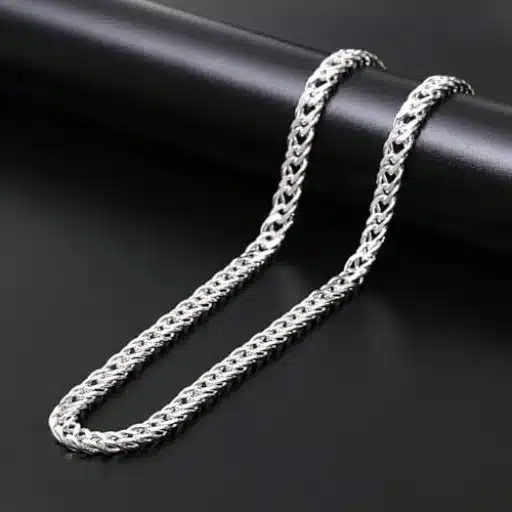
Cleaning and Caring for Sterling Silver
Silver sterling is a metal prided for its beauty and multipurpose application which needs proper care to excel its brilliance and protect it from tarnishing. Regular cleaning is one of the most important steps in preserving the silver’s appearance. To clean sterling silver the right way, either a soft cloth or a non-abrasive silver polish can be used to gently wipe off dirt and tarnish. Avoid using strong chemicals since they can harm the surface of the silver. If you prefer a natural way, then the mixture of warm water with mild dish soap and a soft brush can do the trick for cleaning the elaborate designs.
Research has shown that factors such as humidity and air exposure are environmental causes that can accelerate the formation of tarnish on silver. Putting your sterling silver in anti-tarnish bags or a jewelry box lined with anti-tarnish material will keep it safe from moisture and oxidation. On the other hand, wearing sterling silver often might also lead to less tarnishing since the skin’s natural oils create a protective layer. Recent data indicate that preventive care can prolong the life of sterling silver by as much as 40%, thus highlighting the importance of regular cleaning and proper storage.
Cleaning and Caring for Stainless Steel
- 1. Everyday Cleaning:
Daily maintenance requires just a soft microfiber cloth moistened with warm water to be used to wipe the surface. This way, fingerprints, smudges, and light dirt will be taken off without scratching the metal. - 2. Dealing with Stubborn Stains:
For the most difficult marks, a cleaning solution may be made by mixing equal parts of water and white vinegar or combining mild dish soap with warm water. A soft cloth can be used to apply it while always wiping along the direction of the stainless steel grain to avoid streaking. - 3. Avoid Harsh Chemicals:
Chlorine-based cleaners, abrasive scrubbers, and steel wool must not be used since they can cause the protective chromium oxide layer on the surface to be destroyed thus resulting in rust or discoloration. - 4. Polishing for Shine:
A stainless steel polish or olive oil can be used to give back the brilliant shine. Very little should be put on a clean microfiber cloth to rub gently in circular motions across the surface. - 5. Rust Spots Maintenance:
Rust spots may sometimes appear despite being made of stainless steel, which is resistant to corrosion, however these can be readily treated with a baking soda paste (water mixed with baking soda). Apply it to the rusted area, lightly scrub with a non-abrasive sponge and rinse thoroughly. - 6. Frequency of Cleaning:
It is advisable to clean the surface regularly depending on how much it is used and its exposure. Weekly cleaning is recommended for high-touch surfaces such as kitchen appliances, while once a month or every other month would be enough for decorative items.
Cost Comparison
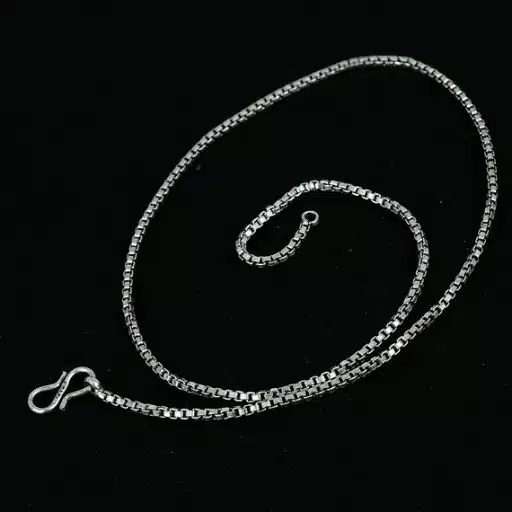
Price Range of Sterling Silver
Recent market data indicates that silver price fluctuates depending on the global demand, and it often averages between $20 to $25 for one ounce. When buying sterling silver items such as jewelry, cutlery, or ornaments, the retail price is going to be very variable. To illustrate:
Simple designs such as rings, or studs can cost anywhere between $20 and $100. The intricate or brand-name jewelry could range from $200 to $500 and beyond.
A single piece of cutlery is usually priced at $50 to $150 while the entire set for larger dining might cost about $1,000 to $5,000, and even more.
Vases, candlesticks, and other such flowers are usually priced based on size and craftsmanship from $100 to $1,000.
Price Range of Stainless Steel Items
Stainless steel is the most commonly used material and in addition to its durability and versatility it also has a very wide range of applications from cookware to cutlery and decorative items. The price range for stainless steel products varies significantly depending on the type of item and its level of craftsmanship:
The price range for high-quality pots and pans made of stainless steel is usually $50 to $500 with premium brands or multi-piece sets reaching even $1,000.
Stainless steel jewelry like rings, bracelets, and watches falls within the range of $20-$300, but designer or custom pieces can be more expensive.
The cost of stainless steel sheets, pipes, and structural elements for industrial use can start at around $50 and go up to over $3,000 per ton depending on the grade and thickness.
Steel flatware, utensils, or home décor products fall under the general range of $10 to $200 depending on their size and design details.
Reference Sources
-
P&K Jewelry Blog
- Title: Sterling Silver vs. Stainless Steel: Which is Best for Your Jewelry Store?
- Summary: This source discusses the differences between sterling silver and stainless steel in terms of market demand, durability, upkeep, and target audience. It provides insights into the preferences of customers and the suitability of each material for different market segments.
- Source Link
-
Deepwear Blog
- Title: Comparing Sterling Silver and Stainless Steel: A Detailed Analysis
- Summary: This article offers a comprehensive comparison of sterling silver and stainless steel, focusing on their durability, appearance, cost, and maintenance. It also highlights the target audience for each material and their respective market positioning.
- Source Link
-
DG Jewelry Blog
- Title: Sterling Silver vs. Stainless Steel Jewelry: Which Is Better?
- Summary: This guide explores the pros and cons of sterling silver and stainless steel, including their target audiences, aesthetic appeal, and maintenance requirements. It provides a balanced view to help readers make informed decisions.
- Source Link
Frequently Asked Questions (FAQs)
❓ What are the distinguishing features of sterling silver and stainless steel?
Sterling silver is a composed metal that consists of 92.5% pure silver and 7.5% of other metals, usually copper. On the contrary, stainless steel is an alloy that does not corrode and is mainly made of iron, chromium, and nickel. The difference between the two types of metal comes from their basic composition, and this varies in their properties such as looks, life span, and care.
❓ Stainless steel vs. sterling silver, which is more durable?
Stainless steel has been recognized for its great strength and invulnerability to scratches and dents, thus, stainless steel is practically harder than sterling silver. Though silver is attractive, it is still a soft metal that is easily scratched and its luster gets diminished by time due to tarnishing. If you are looking primarily for an unbreakable metal, then stainless steel is the metal you should go for.
❓ Is sterling silver jewelry worth the price as compared to stainless steel jewelry?
This is a matter of personal liking and the demand between sterling silver and stainless steel jewelry. Because of its classy and beautiful look, sterling silver is perfect for the production of fine jewelry and decorative items. However, the jewelry made out of stainless steel has more durability, is resistant to tarnish, and is often hypoallergenic, which makes it perfect for daily wear.
❓ Is sterling silver tarnish the same as stainless steel?
Yes, silver slowly turns black, or rather, loses its shine over the years because of the copper in it that reacts with moisture and air. This results in a dull look that cleaning will help remove but will need to be done often. On the other hand, stainless steel is so resistant to discoloration and rust that it can be regarded as very easy to keep its shine without polishing it often.


